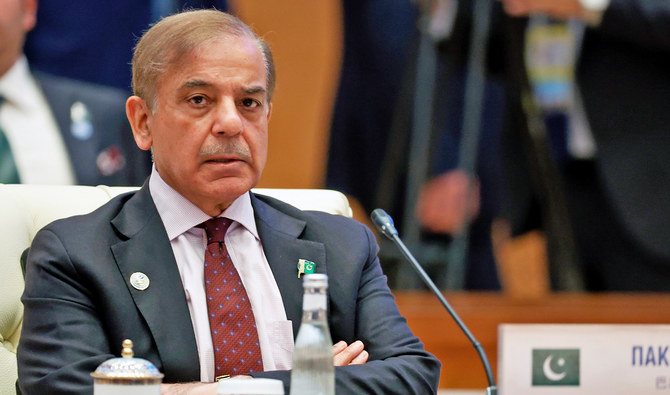———- Premier says will soon announce five-year economic plan
———- Claims to personally monitoring FBR’s digitisation
———- Avers Buna-Raast project to expand reach of digital payment
———- Adds project holds potential to accelerate connectivity
———- Asserts project to facilitate remittances from Arab countries
By Anzal Amin
ISLAMABAD: Referring to the economic challenges, Prime Minister Shehbaz Sharif said on Thursday he would soon announce a five-year homegrown economic programme for the revival of the national economy.
“The ‘Home-Grown Economic Program’ would envisage measures to boost the country’s economy by uplifting agriculture, information technology and other untapped sectors,” the prime minister said, addressing the launching ceremony of the Buna-Raast connectivity project in Islamabad.
He said broad parameters for the programme had already been finalised through months-long delib-erations with the stakeholders.
“Great work has gone into it. By next week or so, we will finalise it. I will go to the people to announce the programme for the next five years,” he remarked. Highlighting the challenges of reforms in the Federal Board of Revenue (FBR) and power sector, Shehbaz said he was personally monitoring the FBR’s digitisation and that the government was hope-ful of positive outcomes of power sector reforms.
“There is no magic wand. It is all about hard work, sacrifice, blood and sweat. Insha Allah, you will see we will have dividends and will find our place in the comity of nations through hard work, hard work and hard work,” he said. Under the Buna-Raast connectivity project, the Raast payment mechanism is being linked with the Ar-ab Monetary Fund’s (AMF) Buna system to facilitate millions of overseas Pakistanis in Arab countries to send remittances through a swift, affordable and effective mechanism.
The prime minister said that besides easing the remittance-sending process digitally, it would also help boost the country’s foreign exchange and further strengthen the already cordial relations between Pakistan and the Arab world.
Calling it a great step forward in promoting financial transactions through modern techniques, he said the project would expand the reach of Pakistan’s digital payment infrastructure.
“This signifies how 21st-century Pakistan is moving ahead by augmenting modern technologies in the people’s lives. This is the first cross-border real-time payment system linkage that will make remit-tances more affordable and accessible,” he said.
Moreover, PM Shehbaz said that the project also held the potential to accelerate the connectivity into a future model of a wider payment system where transactions would take place from region to region with a potential of over $20 billion in annual payments.
He thanked the AFM, State Bank of Pakistan, Ministry of Finance, Bill and Melinda Gates Foundation, and Karandaaz for their support in launching the project.
Earlier, he also gave away the mementos to AMF Chairperson Dr Fahad Alturki, SBP Governor Jamil Ahmed, Bill and Melinda Gates Foundation President Dr Anita Zaidi, and Karandaaz CEO Waqasul Has-san.
In his remarks, Finance Minister Muhammad Aurangzeb said that macroeconomic stability was taking root in Pakistan’s economy as manifested by reduced current account deficit, stable currency, im-proved foreign reserves, upgraded sovereign ratings, and reviving investors’ confidence.
He said the government was committed to infrastructural reforms and that its efforts were bearing fruits, though a lot more was yet to be done. The remittances were on the surge with $3 billion re-ceived in July, he added.
About the Buna-Raast connectivity project, he said the digitalisation would help bring transparency and reduce leakages in remittances, taxation and the power sectors.
He said the project would put the country on a sustainable path and on the right side of the FATF.
Zaidi said the project would link the economies of Pakistan and the Arab world digitally, boost produc-tivity and bring efficiency to systems.
Besides, it will also improve individuals’ lives making it cheaper to send money and improve families’ economic condition as 90% of remittance receivers were women.
She viewed that the project would facilitate, particularly women entrepreneurs enabling them to sell their goods and receive money digitally.




